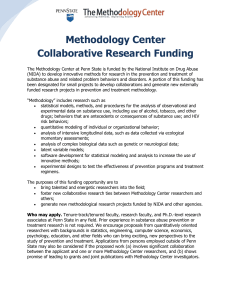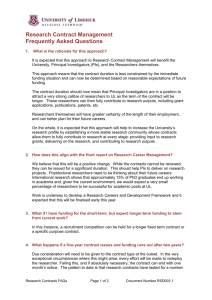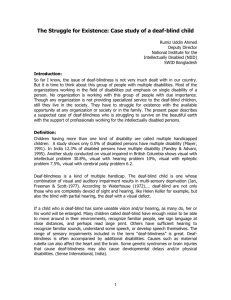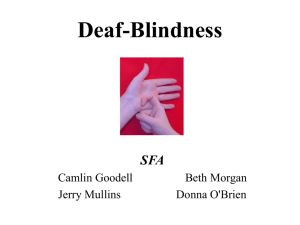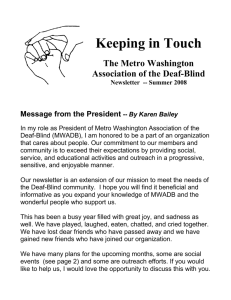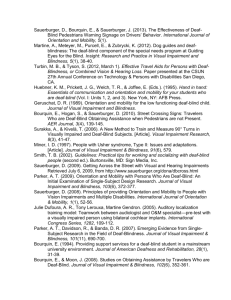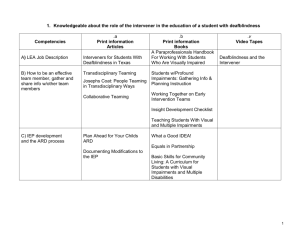Research Update: Stress and Children who are Deaf
advertisement
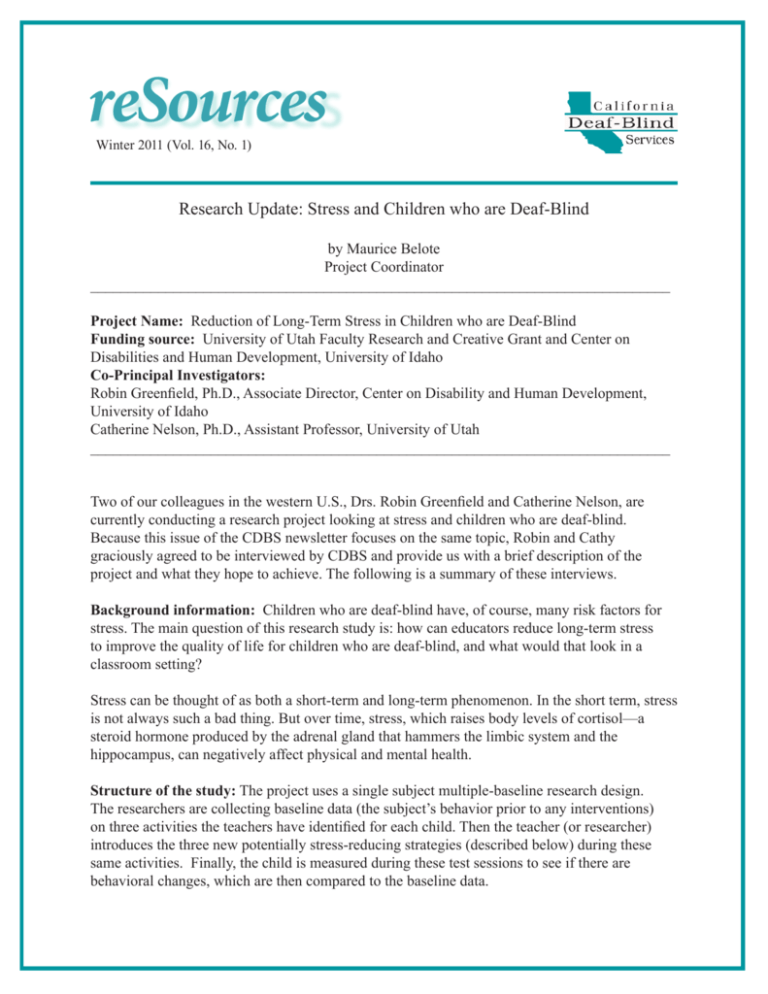
reSources Winter 2011 (Vol. 16, No. 1) Research Update: Stress and Children who are Deaf-Blind by Maurice Belote Project Coordinator _____________________________________________________________________________ Project Name: Reduction of Long-Term Stress in Children who are Deaf-Blind Funding source: University of Utah Faculty Research and Creative Grant and Center on Disabilities and Human Development, University of Idaho Co-Principal Investigators: Robin Greenfield, Ph.D., Associate Director, Center on Disability and Human Development, University of Idaho Catherine Nelson, Ph.D., Assistant Professor, University of Utah _____________________________________________________________________________ Two of our colleagues in the western U.S., Drs. Robin Greenfield and Catherine Nelson, are currently conducting a research project looking at stress and children who are deaf-blind. Because this issue of the CDBS newsletter focuses on the same topic, Robin and Cathy graciously agreed to be interviewed by CDBS and provide us with a brief description of the project and what they hope to achieve. The following is a summary of these interviews. Background information: Children who are deaf-blind have, of course, many risk factors for stress. The main question of this research study is: how can educators reduce long-term stress to improve the quality of life for children who are deaf-blind, and what would that look in a classroom setting? Stress can be thought of as both a short-term and long-term phenomenon. In the short term, stress is not always such a bad thing. But over time, stress, which raises body levels of cortisol—a steroid hormone produced by the adrenal gland that hammers the limbic system and the hippocampus, can negatively affect physical and mental health. Structure of the study: The project uses a single subject multiple-baseline research design. The researchers are collecting baseline data (the subject’s behavior prior to any interventions) on three activities the teachers have identified for each child. Then the teacher (or researcher) introduces the three new potentially stress-reducing strategies (described below) during these same activities. Finally, the child is measured during these test sessions to see if there are behavioral changes, which are then compared to the baseline data. To isolate which of these interventions are most effective in reducing stress, the researchers will remove one of the strategies and measure the subject again. Therefore, there are three phases to the study: Phase 1 involves providing all three intervention strategies in the classroom throughout the three specific activities identified for each child: 1) environmental strategies such as meaningful and motivating activities, taking turns, and making choices; 2) anticipatory strategies, such as cues and calendar systems; and 3) calming strategies, such as bringing the child to midline, deep touch, and using a soothing voice. Phase 2 involves taking away the calming strategies but leaving the other two strategies.* Phase 3 involves taking away the anticipatory strategies but leaving the environmental strategies.* Data during baseline and testing periods is collected on four measures: • Levels of salivary cortisol. (The researchers report that they really like drool!) • Behaviors—unique to each child—that indicate stress and regulation. • The amount of time each of the children is actively engaged. (This is important because there were children who weren’t stressed but were also not engaged in any activities. The researchers wanted to focus on active participation in the classroom.) • The length of time it took the children to reach a regulated state, i.e., when they had no stress behaviors for three consecutive minutes. (The researchers found that if the children were free of stress behaviors for at least three minutes, they were likely to stay that way until they were stressed again.) The researchers are collecting data using a device they are rather lightheartedly calling the “stress-o-meter”. (The hardware and software for the device, which looks something like an iPhone, were developed by Dr. Nelson’s sons specifically for this study.) The handheld device records the frequency and time the children engage in each of the pre-identified stress or regulation behaviors. Once collected, the data can be transferred wirelessly to the researchers’ computers. There have been many challenges along the way. The first was finding enough children who were appropriate for the study. And children who are deaf-blind are a difficult population to conduct research on because there is such variability as to the level(s) of disability. Also, the intervention strategies had to be individually tailored to each child, and the collection of cortisol samples is rather difficult. The saliva has to be retrieved over three consecutive days and three times for each of three identified activities— before each activity, 15 minutes into the activity, and again 15 minutes after that. 2 Early findings and anticipated applications: There is a lot of talk about evidence–based practices, but there is not a lot of scientific research that confirms so much of what we know from experience to be true about children with deaf-blindness: that engaging children in meaningful activities, communicating with them regularly about their immediate environment and with concern for their well-being reduces stress, improves quality of life and the ability to learn. The results of this study are likely to demonstrate via measuring changes in behavior that implementing those kinds of interventions are, indeed, very beneficial to these students. For example, one child who was studied reduced the frequency of stress behaviors from twentyone behaviors per one-minute intervals down to zero with the intervention strategies. In addition, the child’s active participation increased from 14% to 71% in the same activity. In another activity, the child’s level of active participation increased from 0% to 60%. Another child studied slept most of the time at school and the school staff thought this was because the parents kept the child awake at night. As soon as the researchers altered classroom activities, however, the child perked up and was awake at school. (School staff members have become so interested in the study that they want to take samples of their own saliva to measure stress!) The researchers hope that a major application of the results will be to help teachers examine what they are doing to ensure that activities are meaningful, students are actively engaged and motivated, and that students are given a way to know what’s going on and what’s coming up. It is hoped that the study will encourage teachers to carefully consider whether certain classroom practices and routines might be causing stress in their students with deaf-blindness. What’s next: Interventions and data collection for the first two children are completed, the third child is in process and the fourth child will be started soon. Drs. Greenfield and Nelson expect that the data collection should be completed by May 2011, prior to the summer vacation, in order to avoid a long break in intervention strategies. They hope to present their results this fall at the Deafblind International (DbI) World Conference in Sao Paulo, Brazil. They also hope that further research will be conducted to expand our knowledge of stress and how to reduce it in children in order to support learning and improve quality of life. _____________________________________ *Although the study uses a complicated research design that includes a systematic withdrawal of intervention strategies, the researchers stressed that the interventions are reintroduced after two to three days if a child shows signs of stress. 3
